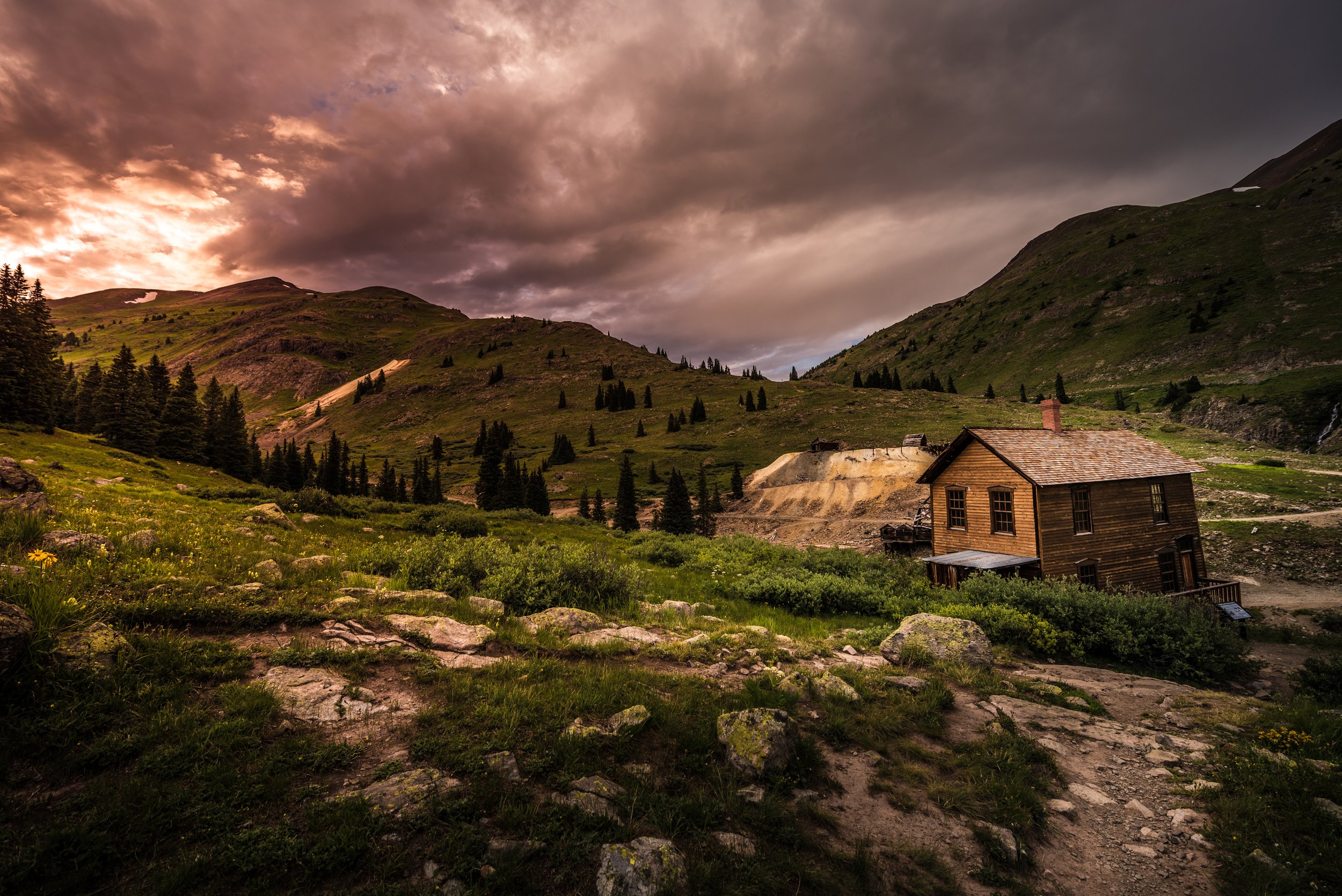Exploring Animas Forks with Jeep Ouray.
Nestled within the picturesque San Juan Mountains of southwestern Colorado lies the small ghost town of Animas Forks. Once a bustling mining community, this historical site is a captivating reminder of Colorado's rich mining history. It offers insight into the challenges and triumphs those who sought fortune in this rugged landscape face.
The story of Animas Forks began in the late 19th century when prospectors flocked to the region in search of precious metals. The discovery of gold and silver deposits drew miners from far and wide, transforming Animas Forks into a thriving settlement by the 1870s. At its peak, it boasted around 30 cabins, several businesses, including saloons and general stores, and a post office.
One notable feature that sets Animas Forks apart from other mining towns is its picturesque location at over 11,000 feet above sea level. Surrounded by towering peaks and nestled along the banks of California Gulch, this remote town offered breathtaking views but posed significant challenges for its inhabitants.
Life in Animas Forks was not for the faint-hearted. Harsh winters brought heavy snowfall that cut off access to supplies and isolated the few residents that stayed for months on end. Despite these challenging conditions, however, miners persevered with remarkable resilience. They built sturdy log cabins equipped with fireplaces to withstand freezing temperatures while relying on each other for support and sustenance.
As more people settled in Animas Forks, seeking their fortunes underground, new mining operations sprang up throughout California Gulch. The extraction techniques evolved from traditional pickaxes to advanced machinery, such as steam-powered stamp mills, to crush ore rocks into dust particles that could be processed further.
In addition to gold and silver deposits found abundantly within California Gulch's mineshafts, tunnels were dug deeper into mountainsides searching for valuable minerals. These endeavors led to the discovery of other precious metals like lead, zinc, and copper, further increasing the importance of Animas Forks as a mining hub.
However, like many boomtowns that relied heavily on mining, Animas Forks' prosperity was short-lived. By the turn of the 20th century, declining ore quality and economic factors led to a decline in mining operations. The once-thriving town began to lose its population as people moved away for better opportunities elsewhere.
Today, Animas Forks stands frozen in time as an open-air museum for visitors seeking a glimpse into Colorado's rich mining heritage. The preserved buildings offer a fascinating insight into how life once was in this remote settlement. Visitors can explore well-preserved cabins with original furniture and artifacts that give an authentic glimpse into everyday life during the mining era.
The National Register of Historic Places recognized Animas Forks in 1980 due to local enthusiasts' historical significance and preservation efforts. Today it is managed jointly by the San Juan County Historical Society and the Bureau of Land Management (BLM), ensuring its continued protection for future generations.
To sum it all up, Animas Forks near Silverton, Colorado, is a beautiful reminder of our nation's past - one defined by grit, determination, and exploration for riches buried deep within mountainous landscapes. Its story is not just about bricks-and-mortar but also about human ambitions fueled by dreams that have always shaped history. By preserving this nostalgic ghost town today, we honor those who came before us while educating future generations about their enduring legacy.


